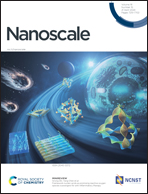Advances in zeolitic-imidazolate-framework-based catalysts for photo-/electrocatalytic water splitting, CO2 reduction and N2 reduction applications
Abstract
Harnessing electrical or solar energy for the renewable production of value-added fuels and chemicals through catalytic processes (such as photocatalysis and electrocatalysis) is promising to achieve the goal of carbon neutrality. Owing to the large number of highly accessible active sites, highly porous structure, and charge separation/transfer ability, as well as excellent stability against chemical and electrochemical corrosion, zeolite imidazolate framework (ZIF)-based catalysts have attracted significant attention. Strategic construction of heterojunctions, and alteration of the metal node and the organic ligand of the ZIFs effectively regulate the binding energy of intermediates and the reaction energy barriers that allow tunable catalytic activity and selectivity of a product during reaction. Focusing on the currently existing critical issues of insufficient kinetics for electron transport and selective generation of ideal products, this review starts from the characteristics and physiochemical advantages of ZIFs in catalytic applications, then introduces promising regulatory approaches for advancing the kinetic process in emerging CO2 reduction, water splitting and N2 reduction applications, before proposing perspective modification directions.

- This article is part of the themed collection: Recent Review Articles


 Please wait while we load your content...
Please wait while we load your content...